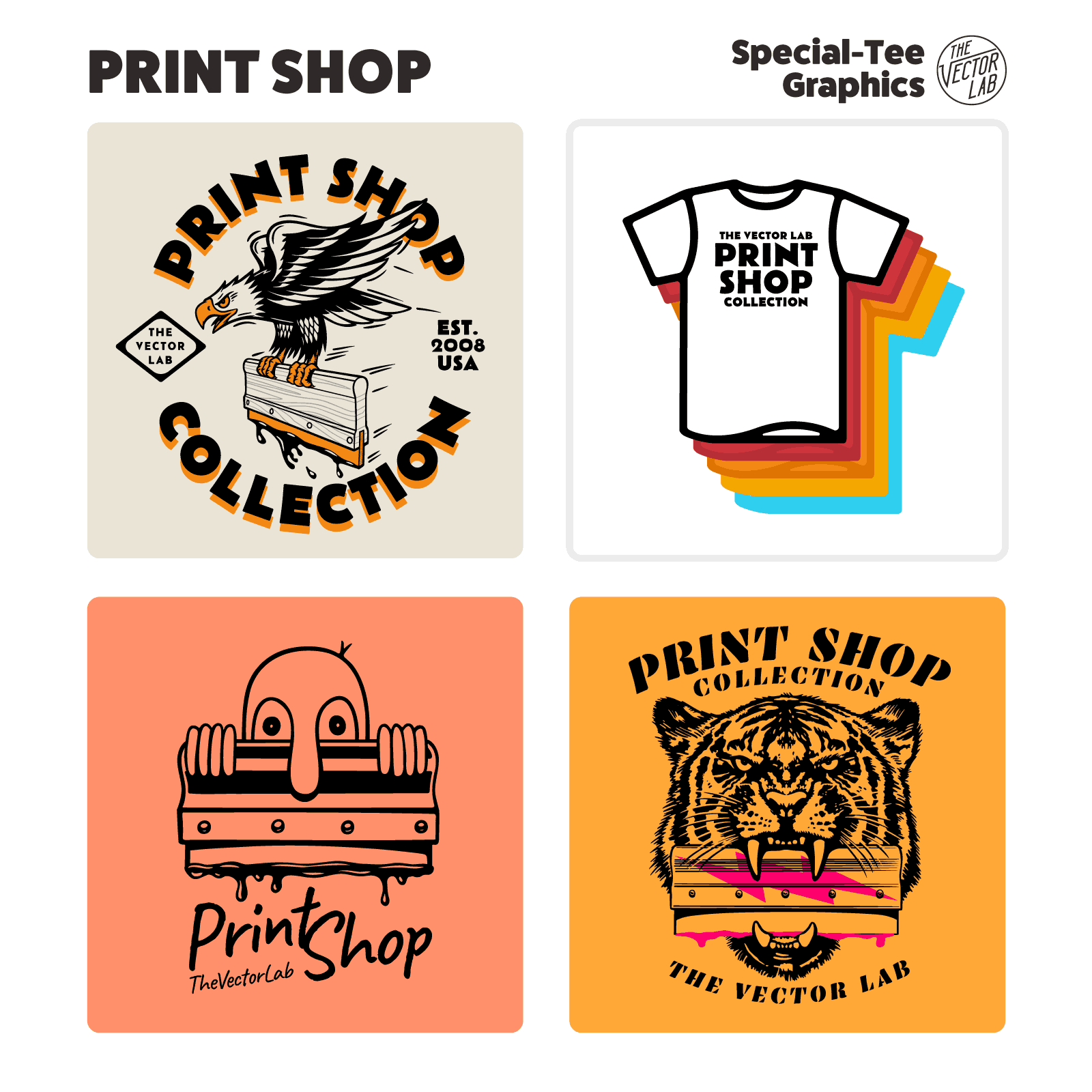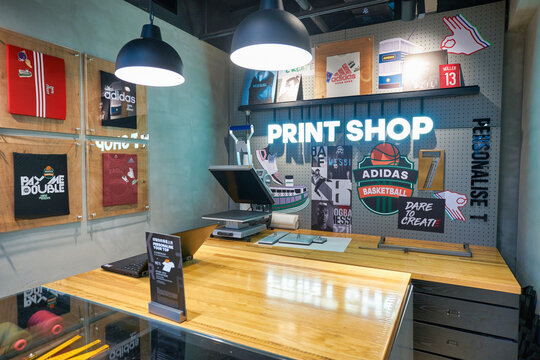The Complete Checklist Before You Visit a Print Shop Near Me
The Complete Checklist Before You Visit a Print Shop Near Me
Blog Article
The Ultimate Guide to Making Use Of Printing Providers for Custom-made Art Prints
Steering via the world of customized art prints calls for a clear understanding of various printing solutions. Artists have to think about variables such as printing strategies and materials to accomplish the desired outcome. Each decision, from art work prep work to shade calibration, plays a crucial duty in the end product. As they explore these elements, musicians can expose the potential for their job to link with target markets in a purposeful means. What steps can they require to guarantee their prints stick out?
Understanding Various Sorts Of Printing Providers
Although lots of people might forget the ins and outs of printing solutions, understanding the numerous kinds available is important for any person seeking to create custom-made art prints. One of the most usual kinds include electronic printing, counter printing, and screen printing. Digital printing is favored for its quick turnaround and ability to create top notch photos directly from digital documents, making it perfect for small runs. On the other hand, balanced out printing deals exceptional photo top quality and is cost-efficient for bigger quantities, making use of plates to transfer ink onto paper. Screen printing, commonly used for textiles and advertising items, involves pushing ink through a mesh display, enabling lively colors and appearances. Each approach has its one-of-a-kind advantages and restrictions, making it vital for artists and designers to assess their particular requirements, such as amount, preferred high quality, and budget plan, before selecting a printing service that aligns with their imaginative vision.
Picking the Right Materials for Your Prints
Choosing the ideal materials is necessary for achieving top notch custom-made art prints. Comprehending the numerous sorts of paper and the importance of ink top quality can substantially affect the outcome. Musicians have to consider these aspects to ensure their vision is precisely represented in the printed item.
Paper Kind Explained
Choosing the ideal paper type is important for attaining the wanted visual and toughness in personalized art prints. Different alternatives exist, each offering distinct features. Shiny paper improves shade vibrancy and information, making it ideal for photography prints. Conversely, matte paper offers a softer finish, which is better for art work that calls for subtlety and appearance. Fine art paper, commonly made from cotton or alpha cellulose, supplies archival quality and is ideal for recreating detailed information in paints (Print Shop Near Me). Furthermore, specialized documents, such as watercolor or canvas, can add distinct aesthetic impacts. Ultimately, picking the appropriate paper kind will substantially influence the final presentation, guaranteeing that the artwork is both durable and aesthetically appealing
Ink Quality Matters
Ink high quality plays a necessary duty in the total success of custom art prints. Premium inks assure vibrant colors, sharp information, and longevity, which are vital for showcasing artistic work. When picking printing services, musicians must think about pigment-based inks over dye-based options, as they supply better discolor resistance and shade security. Additionally, the option of ink must match the selected paper kind, boosting the print's aesthetic effect. Ecological aspects, such as humidity and temperature, can also influence ink efficiency; consequently, musicians should ask about ink formulations that withstand these elements. Ultimately, buying premium ink quality can boost the end product, ensuring that the art print holds to the musician's vision for years ahead.
Discovering Printing Methods: Digital vs. Traditional
While both electronic and standard printing methods have their special advantages, the choice on which technique to utilize commonly hinges on the specific demands of the artwork. Digital printing excels in versatility and rate, enabling quick turn-around times and the ability to publish on demand. This method is especially useful for artists that need special items or small runs, as it eliminates the requirement for extensive configuration processes.Conversely, conventional printing techniques, such as lithography and display printing, frequently create richer colors and appearances, appealing to musicians looking for an extra authentic and responsive surface. These approaches can improve the deepness and quality of the art work, making them ideal for larger versions. Additionally, standard approaches might offer an unique visual that electronic printing in some cases struggles to duplicate. Inevitably, the choice between these methods need to think about aspects like wanted quality, quantity, and imaginative intent, guiding artists to the most appropriate alternative for their tasks.

Preparing Your Art Work for Printing
Successfully preparing artwork for printing needs mindful focus to information, regardless of the selected printing strategy. Musicians have to guarantee that their files are created at the ideal resolution, normally 300 DPI, to keep intensity and quality. The proper shade setting, generally CMYK for print, is vital to achieve the desired shade accuracy. Musicians ought to likewise think about the dimensions of the art work, making certain to consist of hemorrhage areas if required, to avoid any type of unwanted white edges after trimming.Additionally, documents formats play an essential role; TIFF and PDF are typically chosen for top notch prints. Prior to entry, it is essential to assess the art work for any type of imperfections or undesirable aspects. By carefully checking these aspects, musicians can improve the probability of their prints lining up with their creative vision, ultimately bring about an effective printing result.
The Significance of Color Calibration and Proofing
Shade calibration and proofing are necessary actions in the printing procedure, as they assure that the last output accurately shows the artist's vision. Correct color calibration guarantees that the shades showed on the screen suit those that will certainly be printed. This procedure entails adjusting the display settings, printer accounts, and inks to accomplish a constant color representation.Additionally, proofing permits artists to sneak peek their work prior to the final print run. This phase enables them to detect and fix any discrepancies in saturation, shade, or detail, consequently reducing costly errors. By using electronic or hard-copy proofs, musicians can make informed click to read decisions regarding adjustments needed for perfect results.Incorporating shade calibration and proofing right into the printing process not just enhances the high quality of the last product yet also promotes a trustworthy partnership between the printing and the artist solution, guaranteeing fulfillment and integrity to the original artwork.
Picking the Perfect Dimension and Format for Your Prints

Marketing and Marketing Your Custom-made Art Prints
Advertising and marketing customized art prints requires a solid brand identity to attract attention in an open market. Efficient on-line promo techniques and the calculated usage of social media sites systems can considerably enhance visibility and involvement. By incorporating these aspects, musicians can develop a compelling presence that brings in prospective purchasers.
Structure Your Brand Identity
Developing a strong brand name identification is essential for artists aiming to effectively market and sell their custom-made art prints. This identification incorporates the artist's distinct style, values, and tale, which reverberate with possible buyers. Artists need to create a cohesive visual existence throughout all systems, consisting of logo designs, color pattern, and why not try this out typography that reflect their imaginative vision. Additionally, a clear mission statement helps communicate the artist's function and enthusiasm. Involving narration regarding the motivation behind each item can cultivate psychological links with the target market. Uniformity in messaging, whether on social media sites or product packaging, boosts acknowledgment and trust fund. By carefully curating their brand name identification, musicians can distinguish themselves in a competitive market, drawing in faithful customers who appreciate their artistry.
Reliable Online Promo Approaches
What strategies can artists use to effectively promote their custom art prints online? Creating a specialist web site showcasing the artwork is essential. This website must include top quality images and thorough descriptions to involve prospective buyers. In addition, musicians can utilize e-mail advertising and marketing by developing a subscriber checklist to share updates, promotions, and brand-new releases. Collaborating with blog owners and influencers in the art neighborhood can expand reach and integrity. see here Providing special pieces or limited-time price cuts can additionally create necessity, motivating acquisitions. Additionally, optimizing material for search engines with pertinent search phrases will enhance visibility. Finally, keeping a blog regarding the imaginative process can draw in art lovers, fostering a deeper connection with the target market and enhancing the general advertising strategy.
Utilizing Social Network Operatings Systems
Social media platforms work as powerful tools for artists seeking to market and market their custom art prints. By leveraging platforms like Instagram, Facebook, and Pinterest, artists can showcase their job to a large audience. Engaging visuals and calculated hashtags can raise presence, attracting possible customers to their accounts. Frequently publishing content, such as brand-new styles or behind-the-scenes processes, assists maintain audience interest and fosters a feeling of community. In addition, musicians can make use of targeted advertising and marketing to get to details demographics, improving the possibilities of sales. Partnerships with influencers or other artists can better amplify direct exposure. Inevitably, a well-curated social networks existence not only advertises personalized art prints however likewise builds a dedicated consumer base over time.
Frequently Asked Inquiries

How Do I Find Reliable Printing Solution Providers?
To discover reputable printing provider, one should look into online reviews, look for referrals from peers, contrast profiles, request examples, and evaluate client service responsiveness. This comprehensive approach assurances informed choices and satisfying outcomes.
What Is the Normal Turnaround Time for Custom Prints?
The typical turn-around time for personalized prints varies by provider, however usually ranges from a few days to two weeks. Variables influencing this include order dimension, intricacy, and the specific printing techniques used.
Can I Obtain a Refund if I'm Not Pleased With My Prints?
The concern of getting a reimbursement for poor prints often depends on the certain printing service's policies. Many business use complete satisfaction warranties, while others may have rigorous return problems, emphasizing the significance of examining terms ahead of time.
Are There Any Type Of Hidden Prices Linked With Printing Providers?
Many printing solutions might consist of hidden costs such as setup fees, shipping fees, or surcharges for details products. It's important for clients to ask concerning all prospective costs before completing their order.
How Can I Guarantee My Prints Are Eco Pleasant?
To assure prints are eco-friendly, one ought to choose eco-friendly inks, recycled paper, and sustainable printing methods. Researching printing services that focus on sustainability and obtaining accreditations can even more assure marginal ecological effect in the printing procedure. Guiding with the world of custom art prints calls for a clear understanding of numerous printing services. Several individuals may neglect the intricacies of printing solutions, comprehending the numerous kinds offered is necessary for any individual looking to create custom art prints. The most common kinds consist of digital printing, counter printing, and screen printing. Successfully preparing art work for printing calls for cautious attention to information, regardless of the picked printing method. Prints aimed at galleries could need conventional sizes to promote framing, whereas distinct formats might appeal to collectors looking for something distinctive.Lastly, the printing solution's capabilities must be reviewed.
Report this page